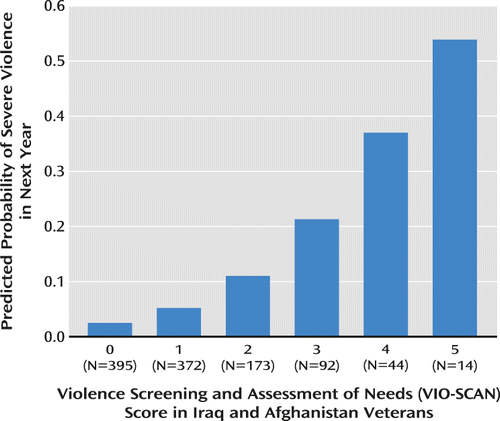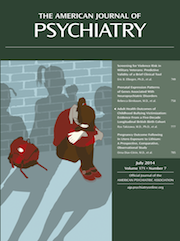In This Issue

The Violence Screening and Assessment of Needs (VIO-SCAN) is a 5-item screening tool that can reveal the need for in-depth assessment of violence risk in military veterans. Elbogen et al. (p. Original article: 749) caution that the VIO-SCAN does not evaluate imminent risk of violence but does provide a structured assessment of chronic risk and a springboard for reducing contributing factors. Several items in the VIO-SCAN assess dynamic conditions—financial instability, alcohol misuse, and probable PTSD plus anger—that can be targeted to modify risk. Of these targets, state editorialists Raskind et al. (p. Original article: 701), PTSD anger may be the most approachable, through both pharmacologic and psychotherapeutic means.
Medications for attention deficit hyperactivity disorder (ADHD) have not been demonstrated to have clear risks in early pregnancy, but fetal growth may be reduced when stimulants are used in late pregnancy. Treatment suggestions offered by Freeman (p. Original article: 723) include cognitive-behavioral therapy, which may allow pregnant or breastfeeding women with ADHD to function reasonably well with less or no medication. For some women with more severe ADHD symptoms who wish to forego medication, it may help to anticipate and accommodate their expected impairments, such as lower work performance and poor driving. Others may choose to continue medication or to use it intermittently, since stimulants take effect quickly.
Both cognitive-behavioral therapy (CBT) and serotonin reuptake inhibitor antidepressants (SSRIs) are effective treatments for separation, generalized, and social anxiety disorders in children and adolescents. The combination of CBT and an SSRI is superior to either alone. Comorbidity of childhood anxiety disorders is the rule rather than the exception. Mohatt et al. (p. Original article: 741) emphasize early intervention for childhood anxiety disorders to prevent impaired development and accumulated functional disability. Family education and training can reduce reinforcement of anxiety and avoidance, but parents with their own anxiety disorders or other psychopathology may need separate treatment.
Depression in children younger than 6 signifies a likelihood of depression or other psychiatric disorder later in childhood. In a prospective study by Luby et al. (CME, p. Original article: 768), half of 74 depressed preschoolers again met the criteria for major depressive disorder at age 6–13. They were also three times as likely as nondepressed preschoolers to have an anxiety disorder or attention deficit hyperactivity at follow-up. Preschool depression was a stronger predictor of later depression than was either maternal depression or traumatic events. Preschool conduct disorder was also associated with school-age depression, but the link was partly attributable to nonsupportive parenting.
Lithium taken during the first trimester of pregnancy appears to increase the risk of cardiovascular anomalies in infants, although some of these anomalies resolve spontaneously. Lithium also raises the likelihood of miscarriage. On the other hand, the risk of illness recurrence is high for women who discontinue taking medication during pregnancy, and so the decision should be made on an individual basis. Diav-Citrin et al. (CME, p. Original article: 785) recommend that women treated with lithium during organogenesis receive fetal echocardiography and level-2 ultrasound. Bergink and Kushner add in an editorial (p. Original article: 712) that guidelines favor using a single medication during pregnancy and that twice-a-day dosing helps avoid high peak lithium serum levels.



